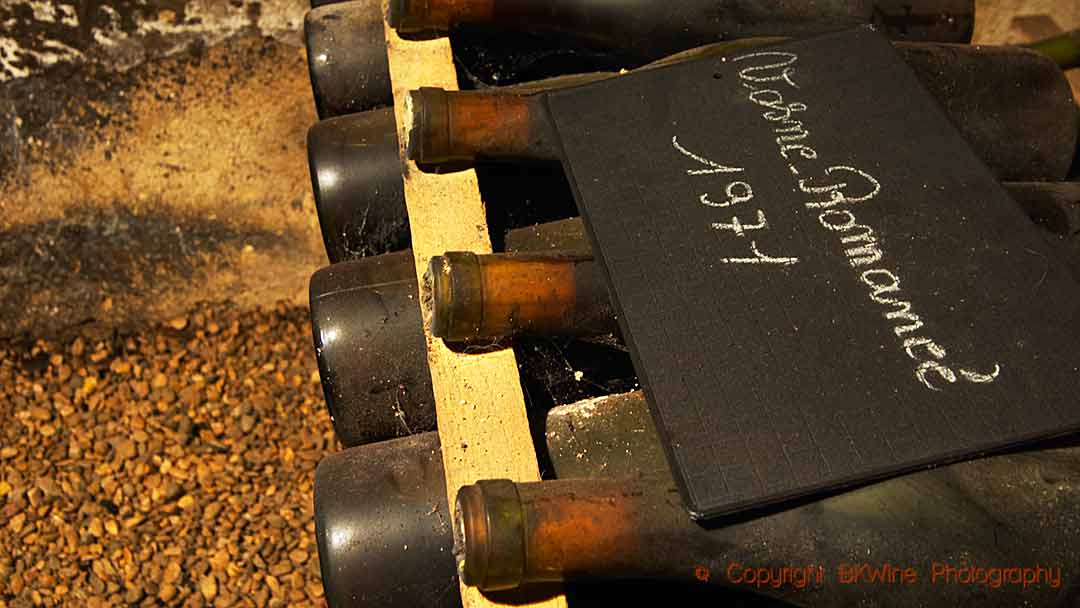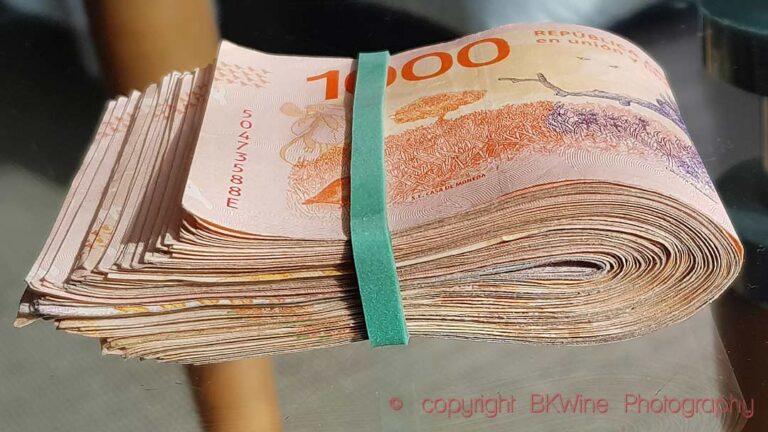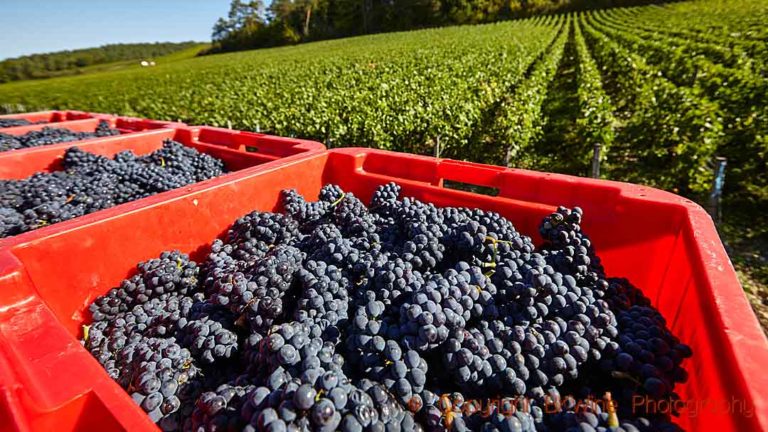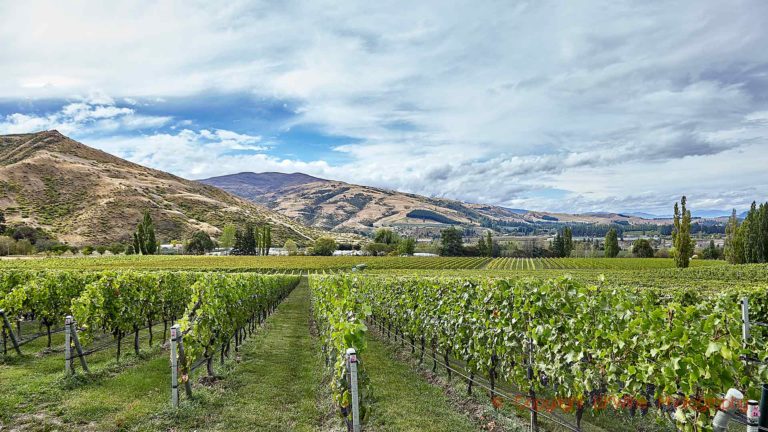Having an ideal wine cellar with a temperature of around 10-14 degrees year-round is not common. And the wine “fridges” that are available on the market are so expensive that hesitates to buy one when one figures out how much wine one could get for the money instead. Ageing wine under some “worse” conditions, for example at room temperature, is not a big problem if you only plan to keep the wines for a “shorter” period, maybe up to five years. However, it is best to do it in a dark space and with not too excessive temperature variations between summer and winter.
But wine is not as fragile as many think. It can handle both higher and lower temperatures without suffering any damage.
However, it’s always better to have a small stock at home and not to buy the wine the same day you plan to drink it. But statistics show that most people have not embraced this good principle.
For many people, a criterion for a high-quality is that it has the potential to be cellared for a number of years. Indeed, one of the special things about wine is its ability to continue developing in the bottle. But you should not forget that most of the wines made today are made for more or less immediate consumption. It is a small percentage of all the world’s wines that are powerful enough to last for more than ten years and not only keep but also get better. Many wines can be kept for at least five years, but they do not improve significantly, but rather risk losing their fruit.
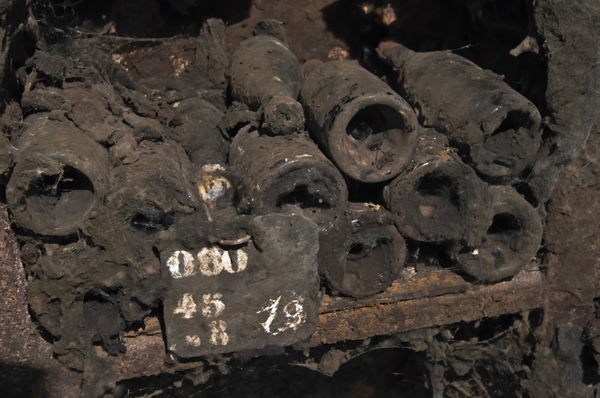
A common misconception is that you have to age wines of a certain quality to achieve their full potential. It’s even quite often that one gets the impression that people appreciate a wine just because it’s old, not because it’s good! We once saw a tasting note form giving points to different characteristics of a wine, nose, taste, appearance, etc. The score was then summed up to a total on a 100-point scale. The wine received extra points if it could / needed to be stored for a certain number of years. If you see it that way you have not understood the point. Age is not in itself a positive quality in wine.
But sure, some wines can get improve with a few years in bottle. But above all, it will develop different characteristics. So the question is more whether you like young wines, or if you like the characters of an older wine.
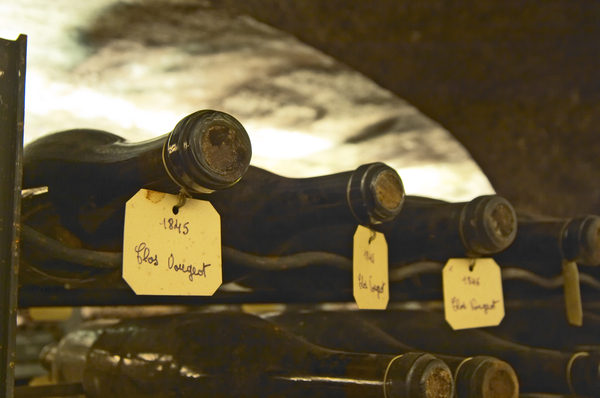
What wines to put down in the cellar?
What wines are worth ageing? Well, for the most part, it is the full-bodied red wines with tangible tannins (these serve as preservatives), rich fruit and good acidity. The wine may be enjoyable to drink as young and yet may have a long life in front of them. In warm vintages, when the grapes are picked very ripe, the tannins are soft from the start and the wine can be drunk young without it being too harsh. However, the wine can be a bit angular and needs to soften a few years so that the different components of the wine are integrated and balanced.
Some white, dry wines can be aged for 10-15 years and you can be rewarded with a deliciously lean honeyed and apricot character. Burgundy wines are the most obvious white ageing wines, but you should not forget, for example, Bordeaux wines of good quality (especially from Pessac-Léognan).
There is certainly no white grape with better ageing potential than chenin blanc from the Loire. Put your money on regions like Savennières and Vouvray. Even good quality riesling wines, both dry and sweet, keep and improve for up to 20 years.
Regardless of the type of wine you cellar, the wines must be of a certain quality. There is no need to keep cheap wines (below, say, 8 euros).
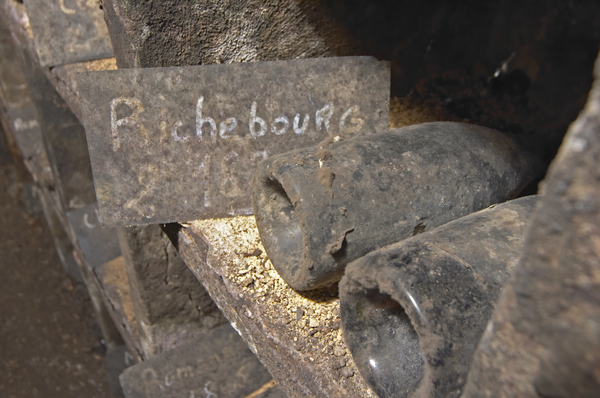
How does a wine develop with age?
The evolution of a wine… The wine needs oxygen to mature, but in very small quantities, otherwise it will quickly become vinegar. During the ageing in barrel, the wine is exposed to oxygen, in particular through the regular racking from barrel to barrel and the topping-up. The oak affects the wine in several different ways. It adds flavour and tannin and the fruit slowly dries out. It also changes the colour of the wine. Therefore, the wine needs to be fairly full-bodied to cope with the oak ageing. Too long ageing in oak can result in wines with dried-out fruit. As soon as the wine has been put in bottle, the maturation process slows down. The chemical processes that take place in the wine during the ageing in bottle changes both the colour, the acidity, and the aromas.
Even before you smell a wine you can often see if it is an older wine. The colour of a red wine becomes lighter over the years. From a dense red with a blue / purple tinge when young it then assumes a brick red and later a brown-orange tone. The deposit in an older bottle is partially made up of precipitated colour molecules. But it is not always so. Some wines look “old” already as young, such as many wines made on nebbiolo or sangiovese.
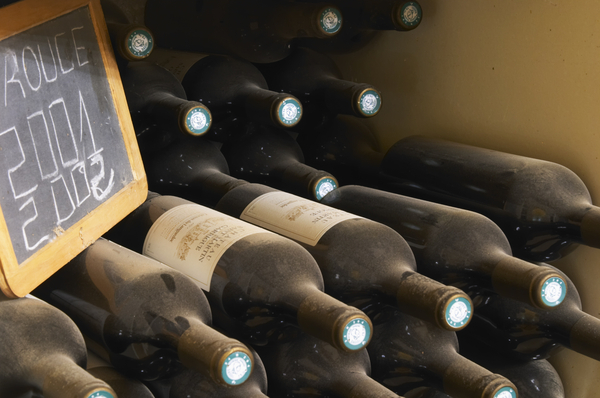
On the other hand, a white wine becomes darker over the years and assumes a deeper beautiful golden-yellow tone.
The aromas also change over the years. The young red wine can be astringent and slightly angular and fruity and berry characters dominate. New aromas develop with ageing and give the wine a character more like tobacco, freshly ground coffee, leather, figs and dried fruits.
The tannins soften with time and the wine feels smoother and rounder. The older the wine becomes, the more difficult it will be to describe it. The different constituents of the wine are not as distinct anymore but instead form a harmonious ensemble. The wine has reached its peak. The fruit aromas will then gradually disappear and the wine will eventually feel dried-out and the acidity will become sharp. There may also be some oxidation that gives the wine some characters of a fortified wine (that can often be slightly oxidised). Clear signs that the wine should already have been drunk!
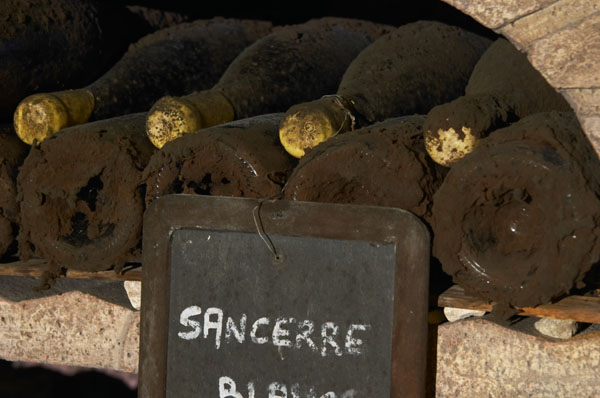
Wines for the cellar
If you want some diversity in your wine cellar you can choose wines from these five different categories, wines that are different in style but all have ageing potential.
Red wines
Bordeaux and Bordeaux style (good quality cabernet sauvignon from California, Australia and other countries)
There is so much variation in style and quality in Bordeaux so it’s not possible to generalize. The Bordeaux and Bordeaux Supérieur appellation wines should generally be drunk within five years and a grand cru classé from Médoc may need 10 years before it should be drunk and keep for 30. High-quality cabernet wines from the New World should keep 10 years or longer without problems but have, generally, soft tannins that make them very drinkable much earlier.
Powerful red from the Rhône (the northern part and good Châteauneuf-du-Pape and other good quality wines from the south), Australian Shiraz wines, Cahors, Madiran
It’s a good idea to lay down a few Rhone wines like Hermitage, Côte Rôtie and Cornas for 10 years and the little lighter Crozes-Hermitage and Saint-Joseph for 5-8 years. For a Châteauneuf-du-Pape, and other top quality wines from the south, around 8 years should be enough. Madiran is a beautiful ageing wine and keeps and improves for at least 10 years. Other wines from the southwestern corner of France also have some cellaring potential, especially Cahors.
Shiraz from Australia can be very powerful and alcoholic and often good to drink quite young, but it can be beneficial to give them 4-5 years before pulling the cork.
Also, bet on some better Languedoc-Roussillon wines. There are wonderful gems at very moderate prices in this exciting region.
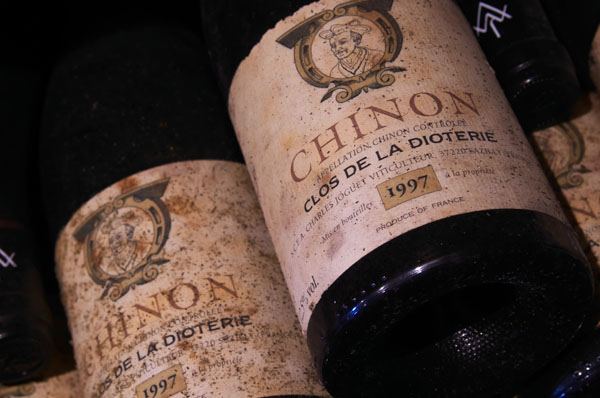
Elegant red, high-quality Burgundy, Rioja and Brunello di Montalcino
Most Burgundies are too light to be cellared for any significant time and are best for fast consumption. Ageing for a maximum of five years may be reasonable. It’s an infinitesimally small part that is worth keeping for 10 years. We are then talking about exceptional wines on premier cru or grand cru level from top producers with prices thereafter.
Rioja can be considered as a cellaring wine at Reserva and Gran Reserva level even if they are delicious to drink immediately when they are released from the producer. But on the other hand, they can almost age indefinitely.
Brunello, like a good Burgundy, becomes deliciously silky after 6-10 years. Bandol from Provence is made from the powerful grape mourvèdre and is very well-suited for ageing for up to ten years.
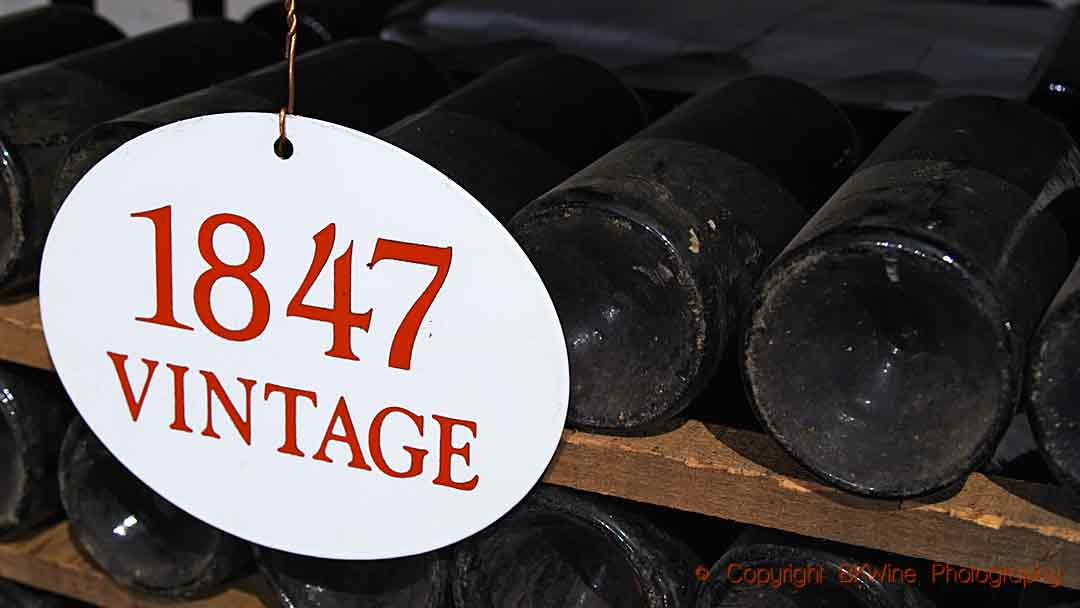
White wines
High-quality chardonnay (from Burgundy and other countries) and high-quality white Bordeaux (from Pessac-Léognan)
If the oak dominates in the young wine then there is no doubt that the wine should first be cellared a few years to get better balance and “shave off” the edges of the oak. However, not longer than 10-15 years. White Châteauneuf-du-Pape and other white Rhone wines made from marsanne and roussanne grapes are also well-suited for ageing (for around 10 years).
Savennières and Vouvray
These wines made from chenin blanc have an incredible ageing potential. After twenty years they can still feel young and will eventually become even better than when young.
Sweet white wines
Sauternes and other botrytis wines such as Tokaj, Sélection des Grains Nobles from Alsace, Beerenauslese and Trockenbeerenauslese from Germany, late harvest wines from Australia and California and Eiswein from Germany.
Just like the tannins in red wines, the sugar conserves the sweet wines and such an extent that sweet wines are the most long-lived of all wines.
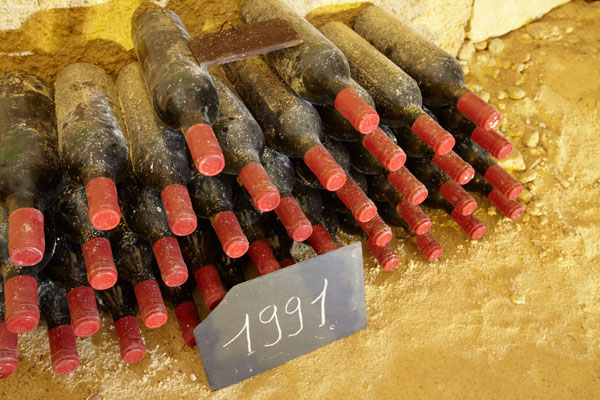
There are of course lots of other wines that can be worth laying down in the cellar. Just remember a few keywords:
- Good tannins (especially for red)
- A good deal of acidity
- At least relatively full-bodied
However, keep in mind what many wine producers answer when you ask how long you can age their wines: “Do you think it’s good now? Then drink it now! “On the other hand, if you do not think it’s good now, then it will probably not be better with ageing.
(All time indications are given from the harvest year, the vintage of the label.)
